Bhutan – My Culinary Expedition – 1
Can you think of drinking tea with salt and butter? What about eating a curry full of hot and spicy chillies? Would you dare to eat yak cheese?? Bhutan local delicacies are unheard of but very interesting. Bhutanese cuisines are famous for its spiciness. The Bhutanese use chilly not for seasoning but as a vegetable. Other common ingredients used are radishes, tomatoes, turnips, spinach , pumpkin, beans, ferns , mushrooms etc.
In Bhutan, the food available in restaurants is a mix of Bhutanese, Indian, Continental and Chinese dishes. Being a hardcore foodie, before I embarked on my Bhutan trip, I made a list of authentic dishes of Bhutan. Each time I found a dish that was in my list, I had a great sense of achievement. I was happy that by the end of my week-long stay in Bhutan, I managed to find most of cuisines in my list- out of which many I tried and photographed the remaining when others ordered. Though the food was on the spicier side, I had a memorable experience.
Ema Datshi ( Chilly and cheese)
It is the national dish of Bhutan. Ema means chillies and Datshi means Cheese. It is made with either green chilly or red chilly. Chillies are sliced lengthwise and boiled with onion, cheese, and butter. It is served with almost every meal. I tried this at several restaurants. At some places it was watery and at some places it was thick.
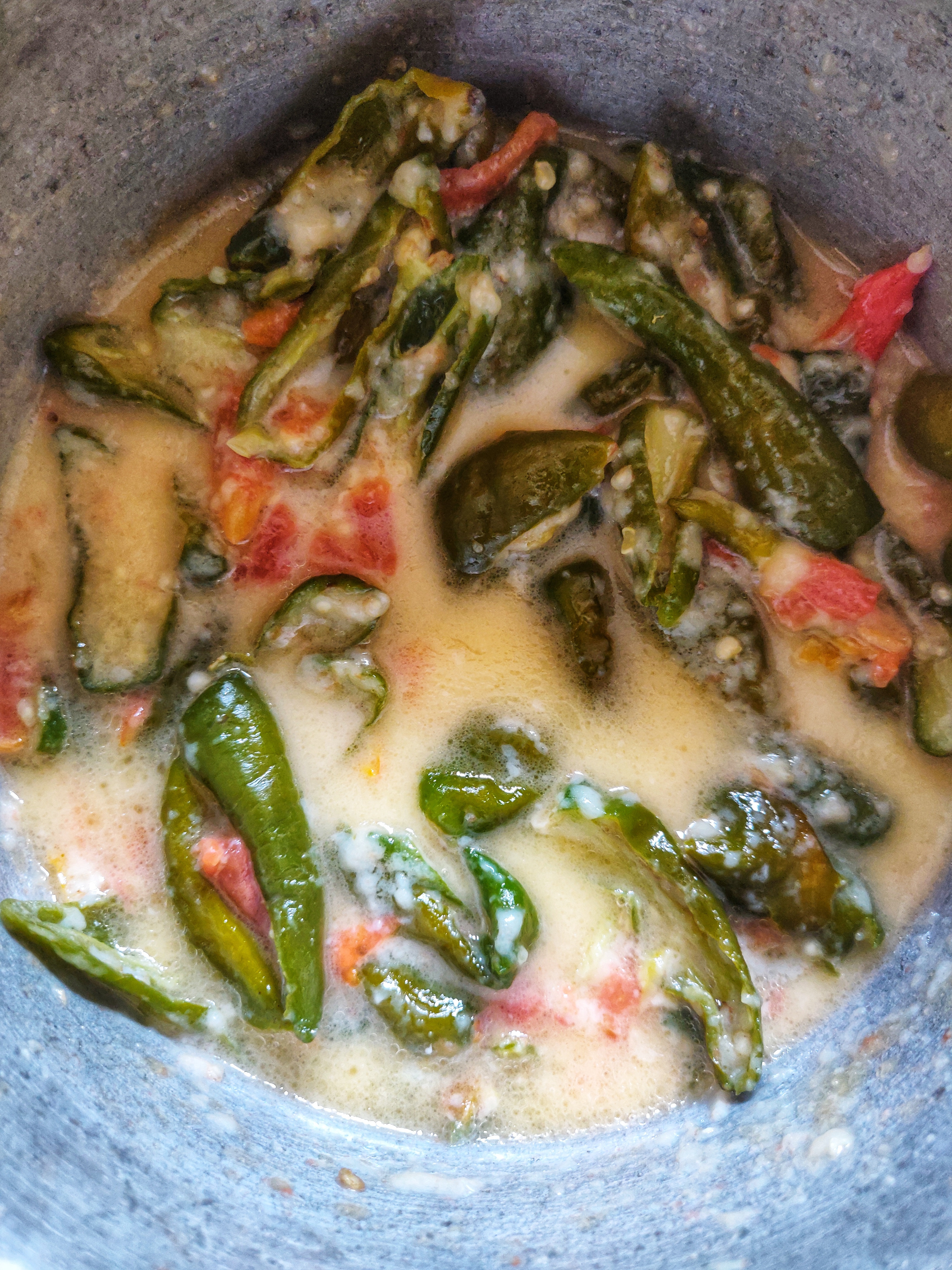
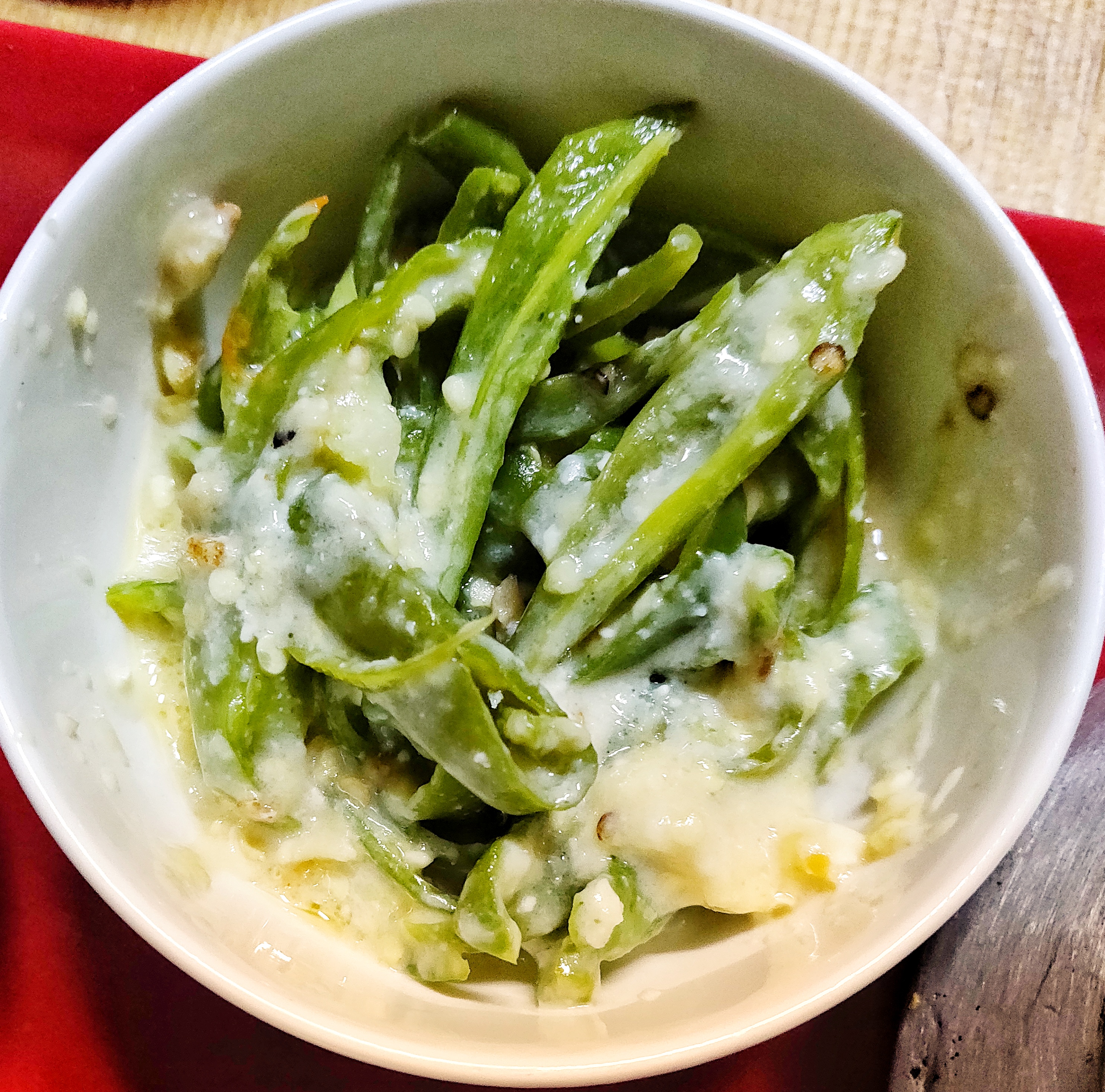
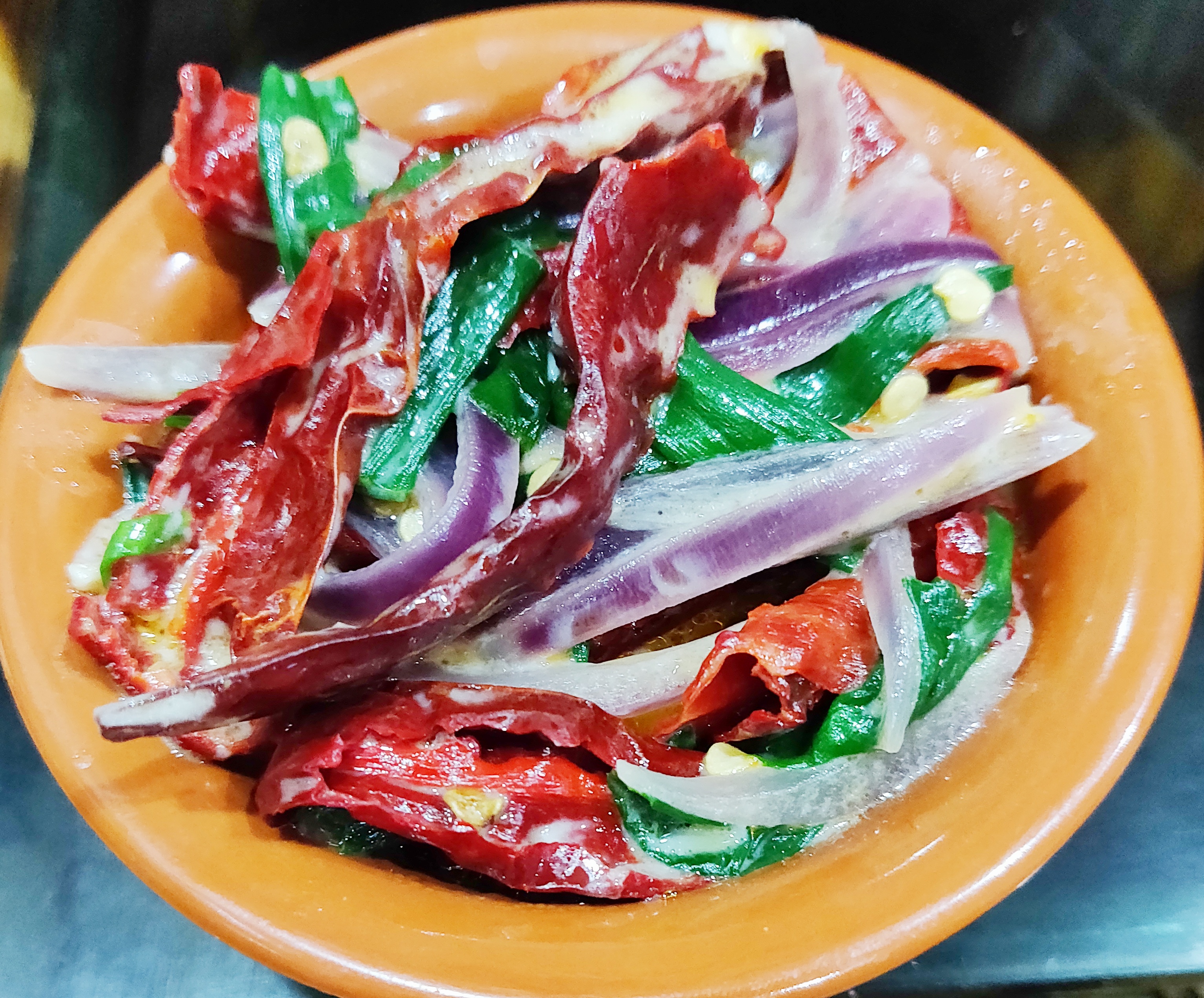
Once, I just picked all the chillies out of the dish and was surprised that very little curry remained. To my shock, the bhutanese friend who accompanied me ate all the chillies in her bowl. Seeing her action, I thought chilly must be some less hot variety and took a bite of the chilly in my ema datshi and I had to gulp a whole bottle of water to remove the spiciness. But I did enjoy having it with Bhutanese rice after removing chillies. It is available in most of the restaurants. Price ranged from Rs. 70 – Rs. 150
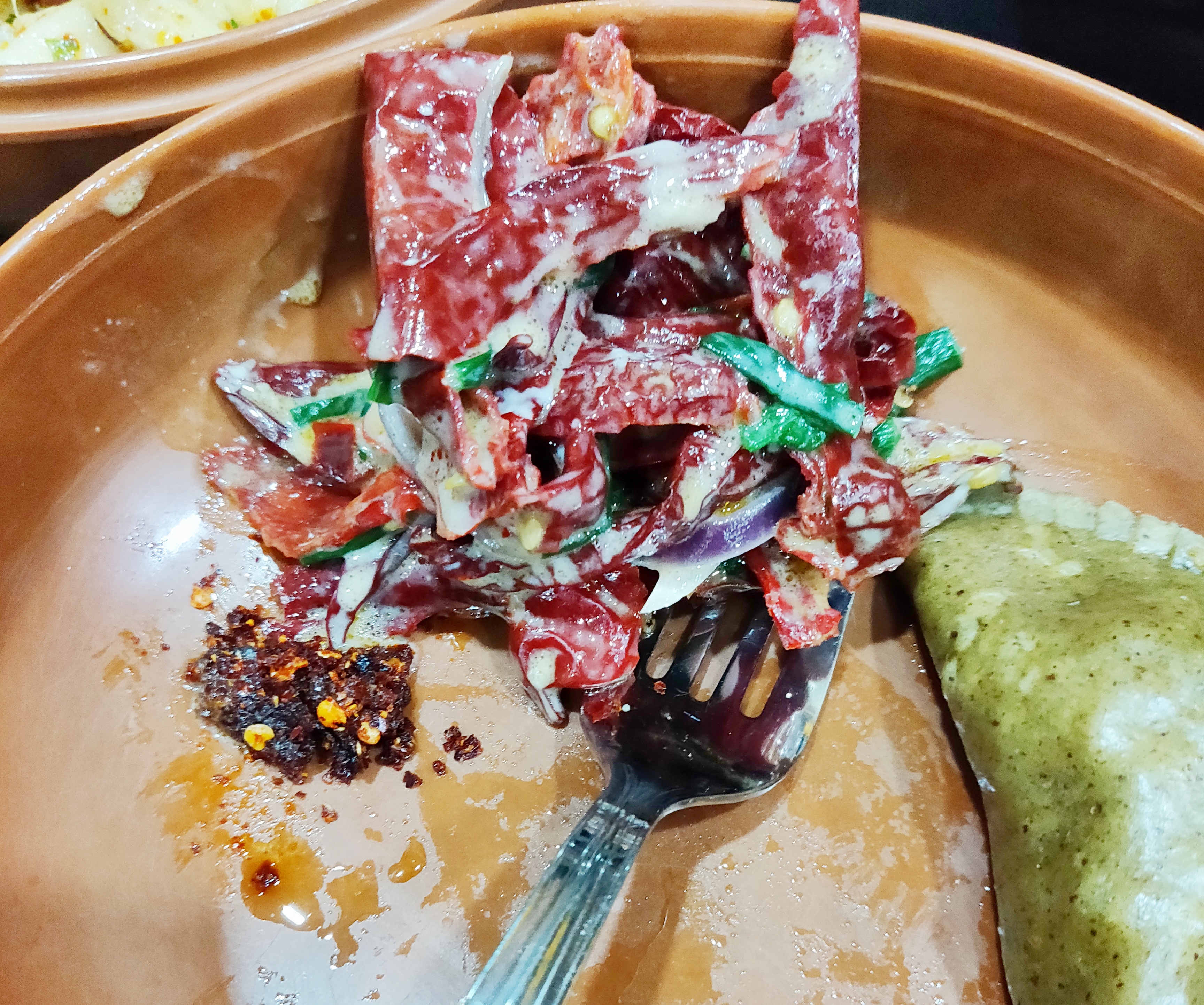
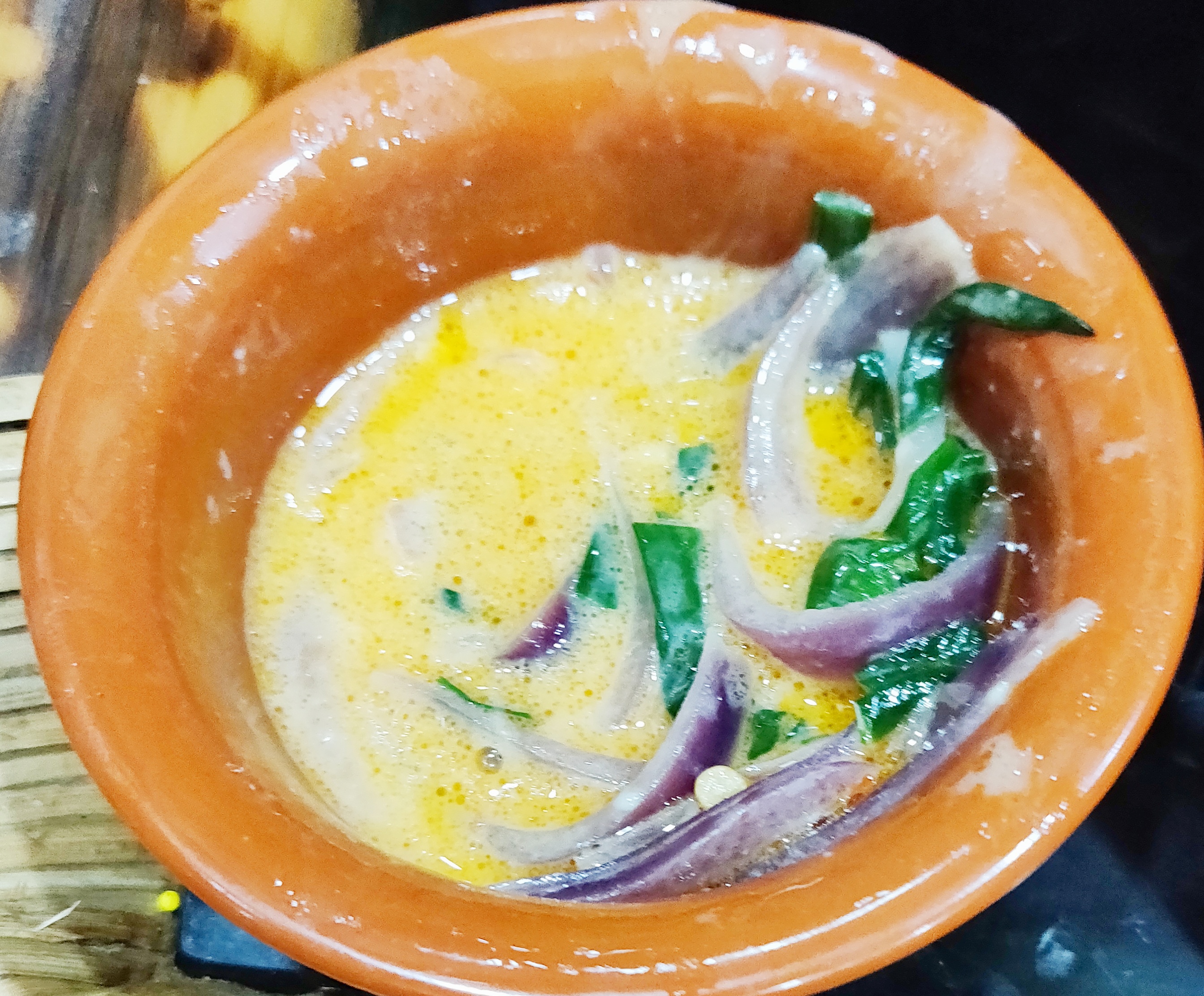
- Kewa datshi (Potato and Cheese)
Kewa means potatoes and datshi means cheese. Potatoes are sliced into thin long pieces and sautéed in butter. It is then cooked in cheese sauce. At times, green chillies and tomatoes are added. It tasted more like potato stew but was richer. I tried this on my way to Thimbu from a local eatery where it was given along with rice and pappad. The price was Rs. 150.
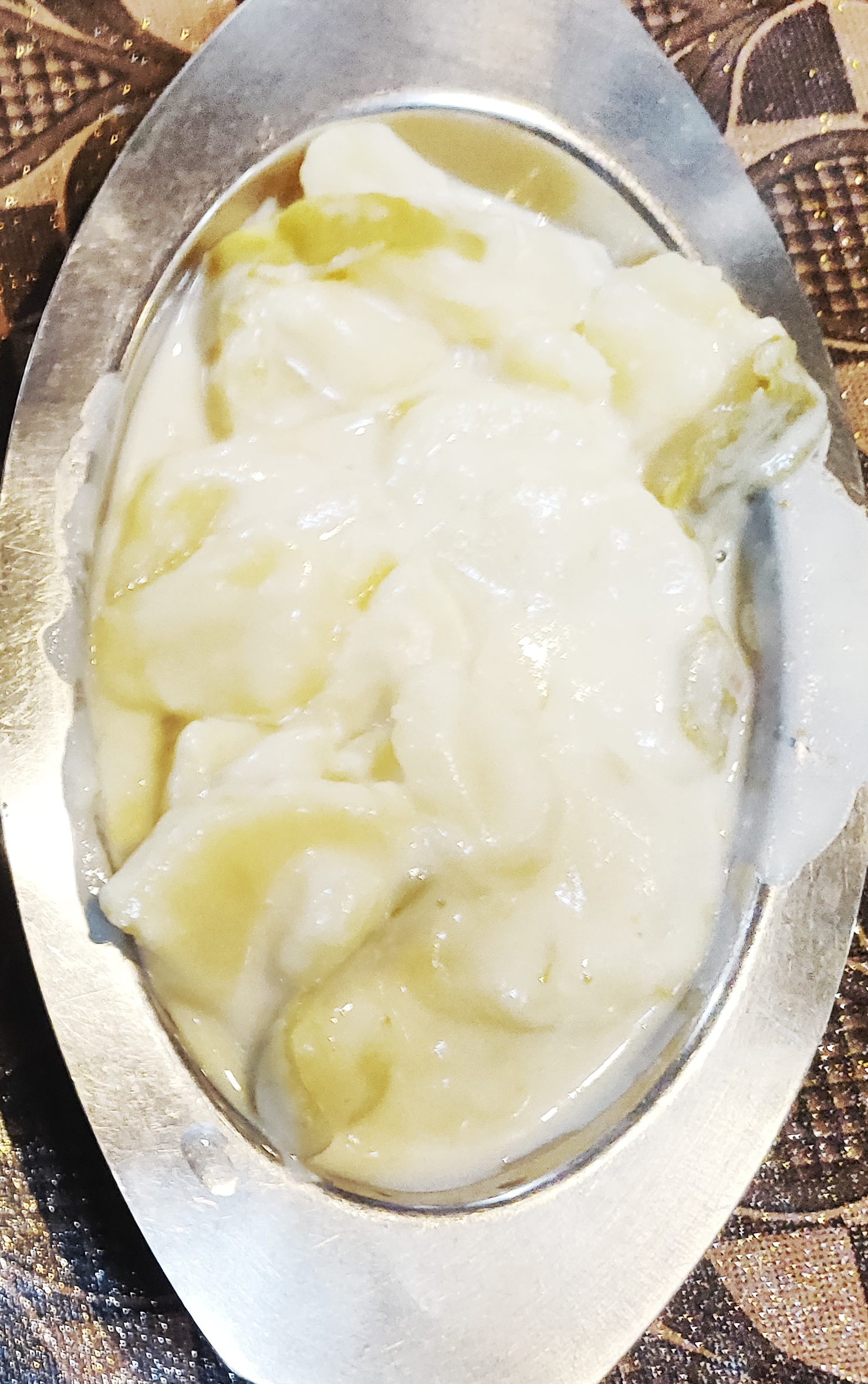
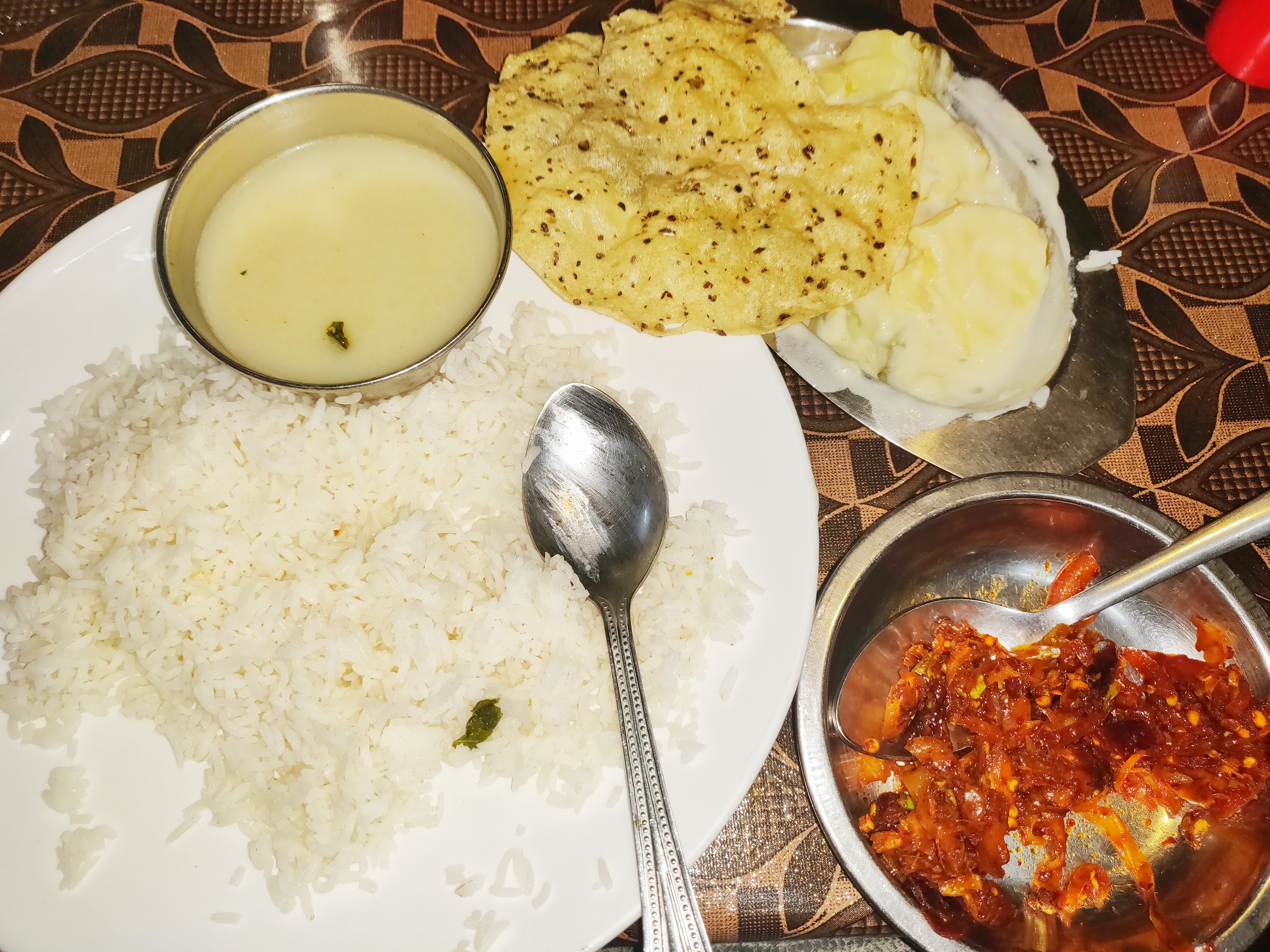
- Shamu Datshi (Mushrooms and Cheese)
Shamu means mushrooms. Local varieties of mushrooms are cooked in cheese and butter along with green chilly. I had it twice. Once at farm stay in Phobjikha and other time at a restaurant in Paro. At the farm stay they used local mushrooms and hence it was very delectable. The restaurant used button mushrooms and the taste was average. The price was Rs. 140.
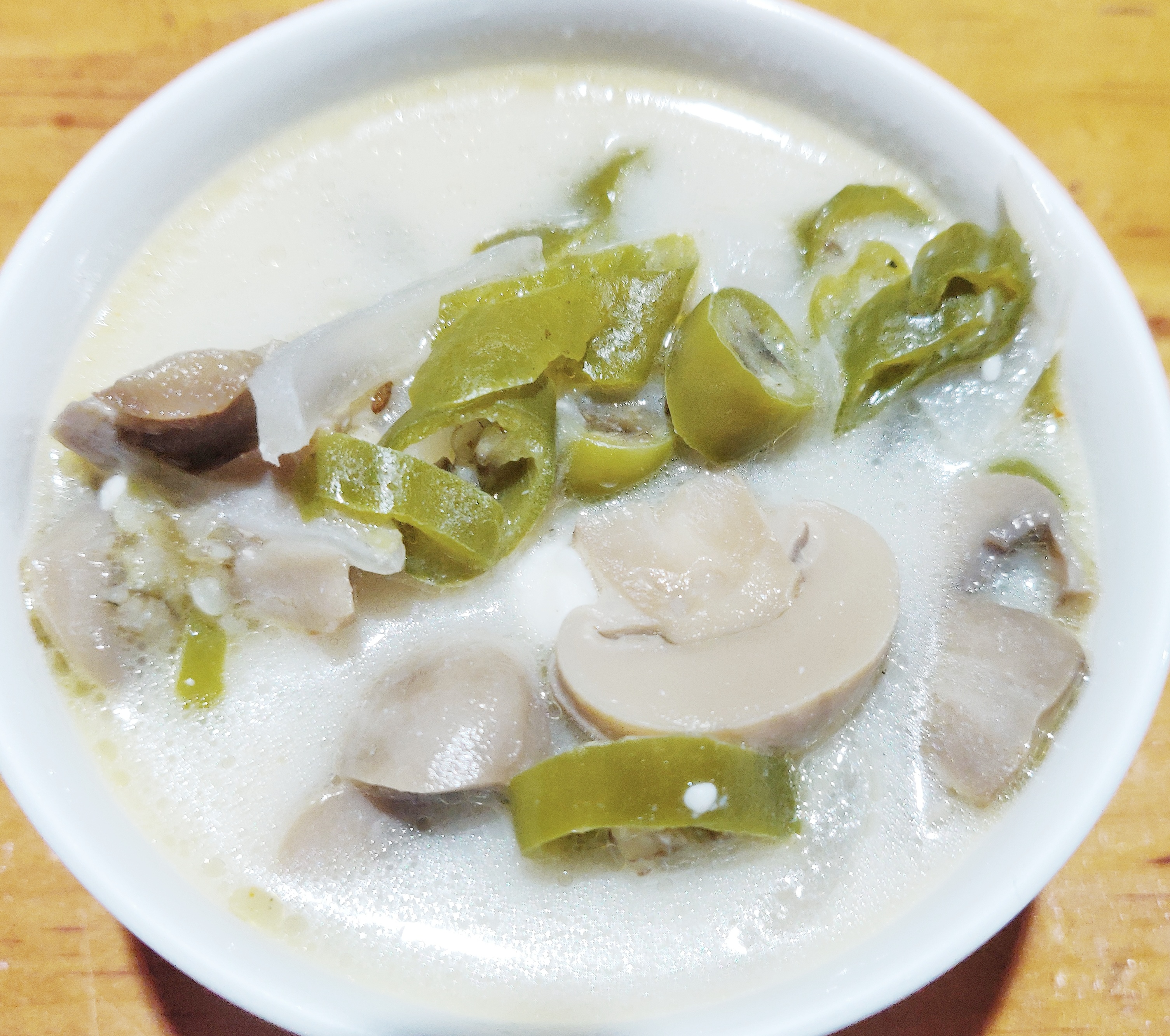
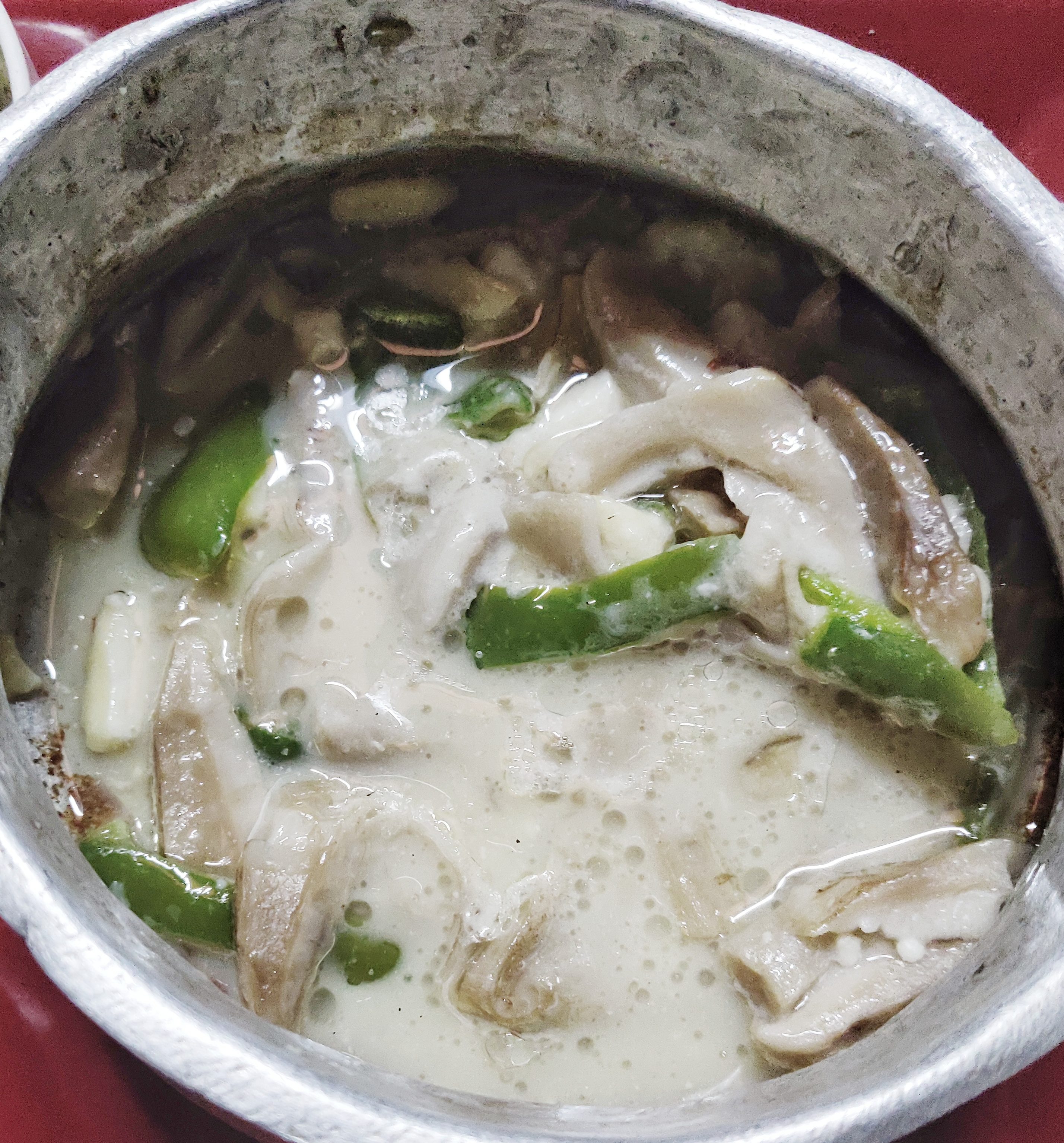
- Red Rice
It is the staple food of Bhutanese people. Bhutanese take rice three times a day – breakfast, lunch, and dinner. It is similar to brown rice in appearance but has a nutty taste. It is mostly grown in high altitude places like Paro. It’s very tasty and filling.


- Khur le (Pan Cake)
It is a traditional breakfast. Pancake is made from buckwheat or barley. It tasted bland. But when dipped in side dish it was tasty. I had this at the restaurant near youth centre. The price was Rs. 100.

- Jang Buley
It is a kind of flat noodles cooked with onion and spices. Even though it looked like Pasta, the Bhutane spices made it more flavourful and distinctive. I had the dish from the restaurant near Youth Centre. The price was Rs. 140.
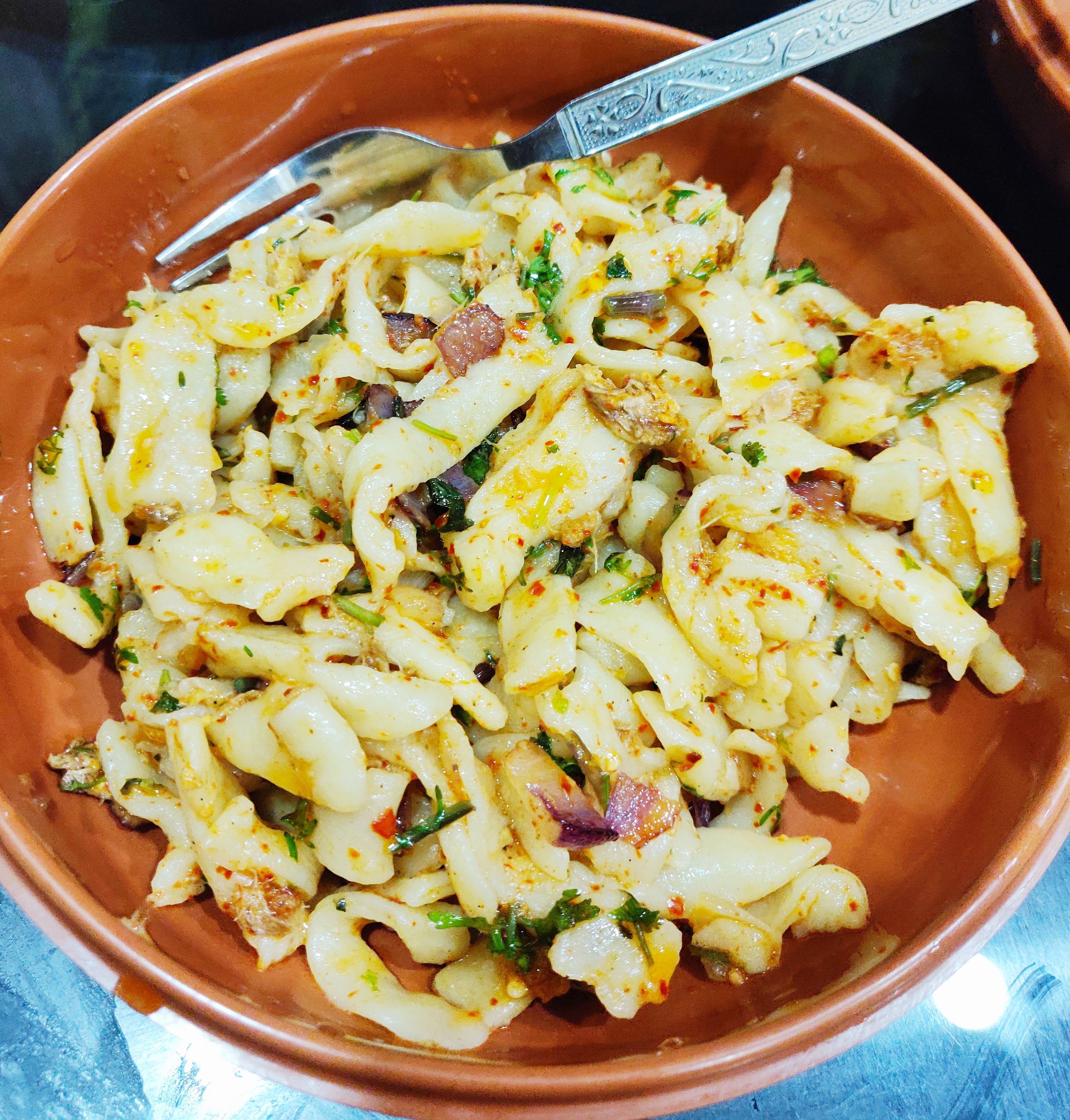
- Puta (Noodles)
It is a traditional Bhutanese noodles made from buckwheat and is more common n Bhumthang. Hence it is also called Bhumthang noodles. It’s a healthier version of noodles. It is prepared with boiled noodles adding light seasoning of salt and Sichuan pepper. Sometimes noodles are stir fried in mustard oil to make variations.
Noodle was dense but soft and it had an exotic taste. I had it from Mountain Café at Paro. Mountain Café is a very expensive restaurant. But just because I couldn’t find this dish elsewhere, I had it by paying Rs. 320. They provided an accompaniment which tasted like a mixture of curd and mayonnaise and which didn’t go well with the noodles.
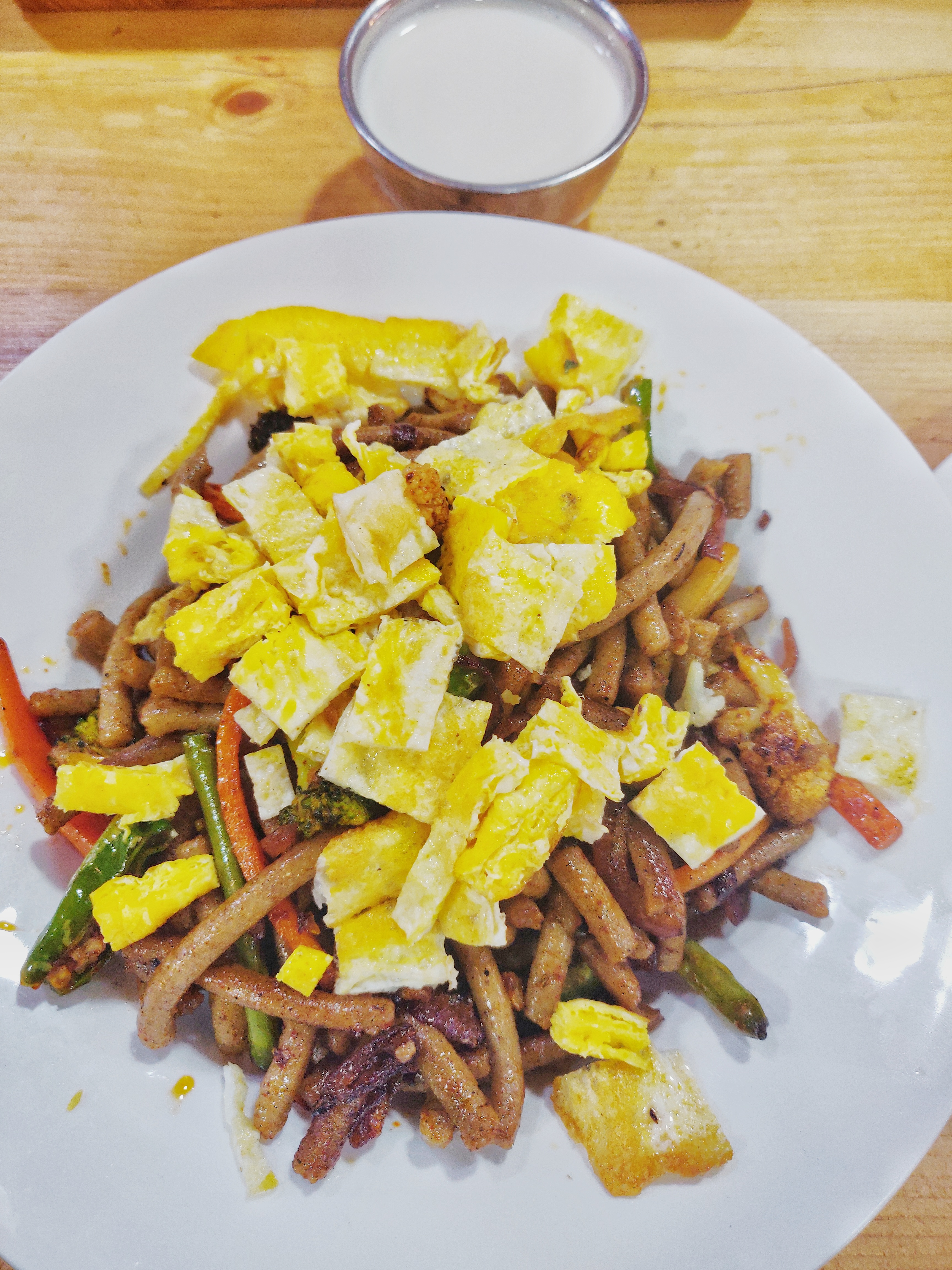
- Momos (Dumplings)
It is one of the easily available dishes, basically dumpling with filling. The stuffing is prepared with spices mixes such as coriander, garlic and ginger. Both vegetable and meat versions are available.
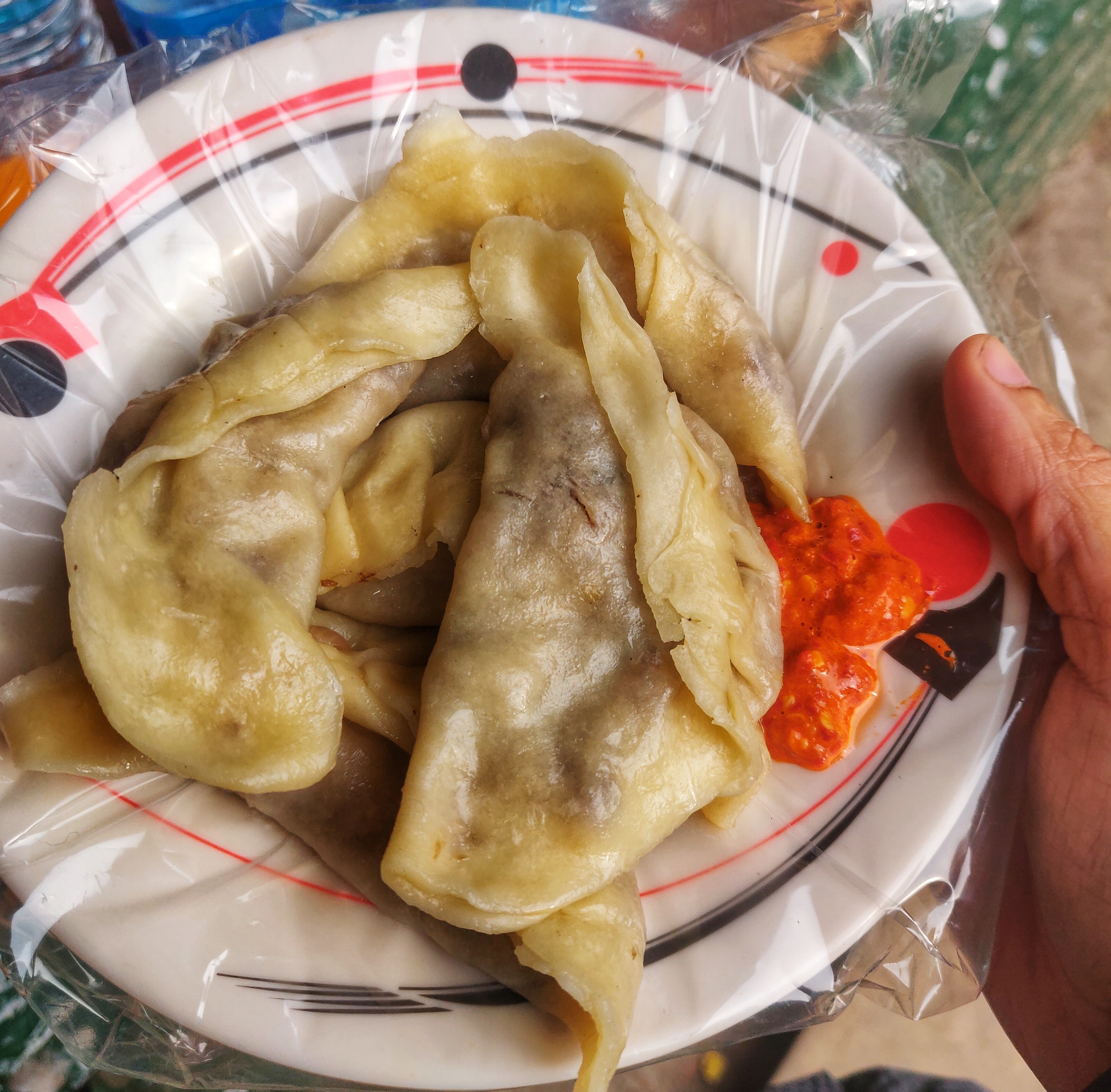
Bhutanese eat momos daily as well as served on special occasions. Since momos are available in India, I was not very keen to have it. But the lady road side vendor in Thimbu bus stand insisted so much that I ended up buying a plate. The hot momos were spicy and tantalising. It was priced at Rs. 50 per plate.
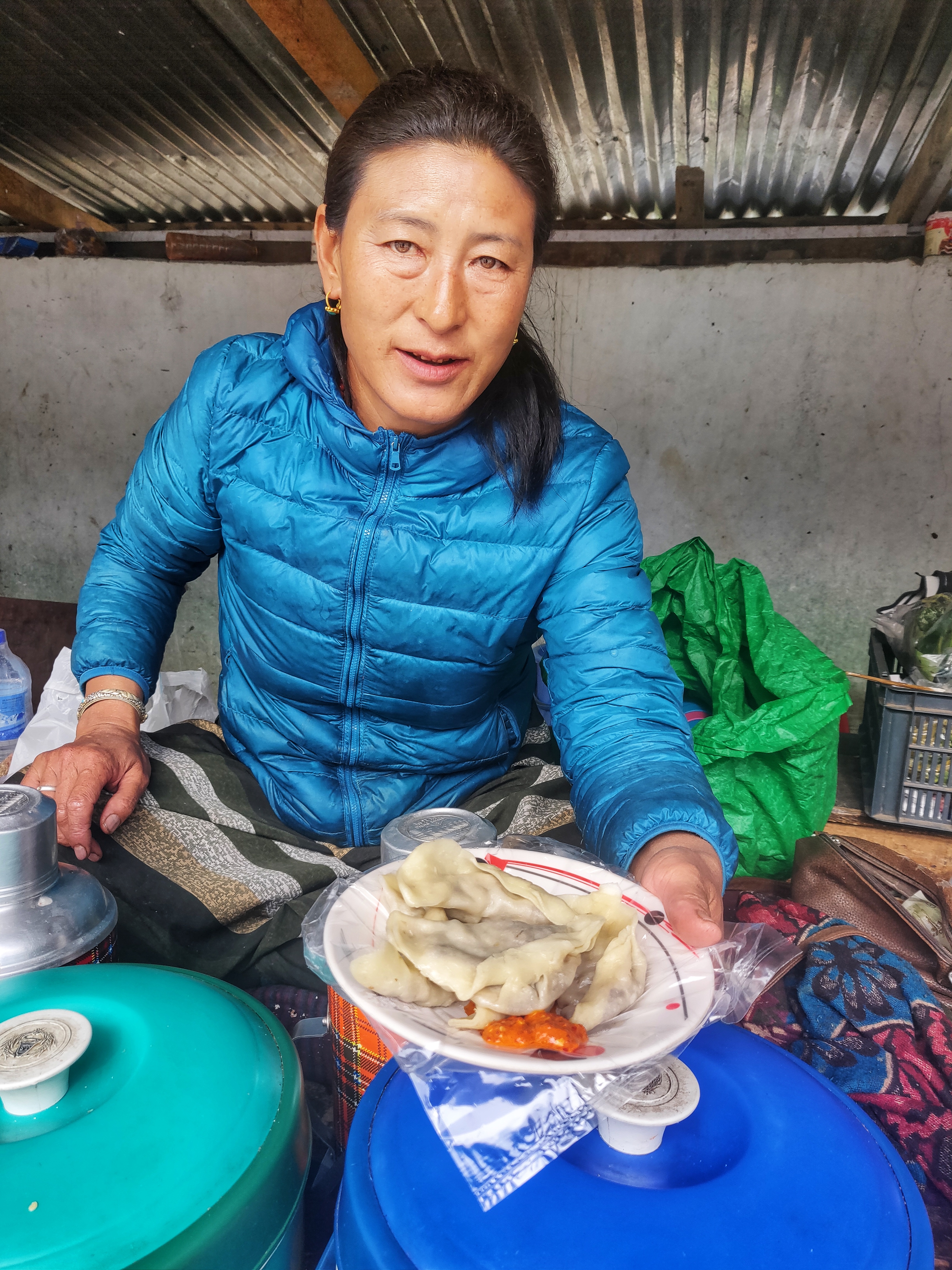
- Hoentey (Dumplings)
Dumplings made from buckwheat are called Hoentay. It originated from Haa Valley. Aromatic dumplings are filled with seasoned local spinach and turnip leaves giving it a tangy and slightly bitter taste. I had it at the restaurant near the youth centre. Price was Rs. 120/ plate.
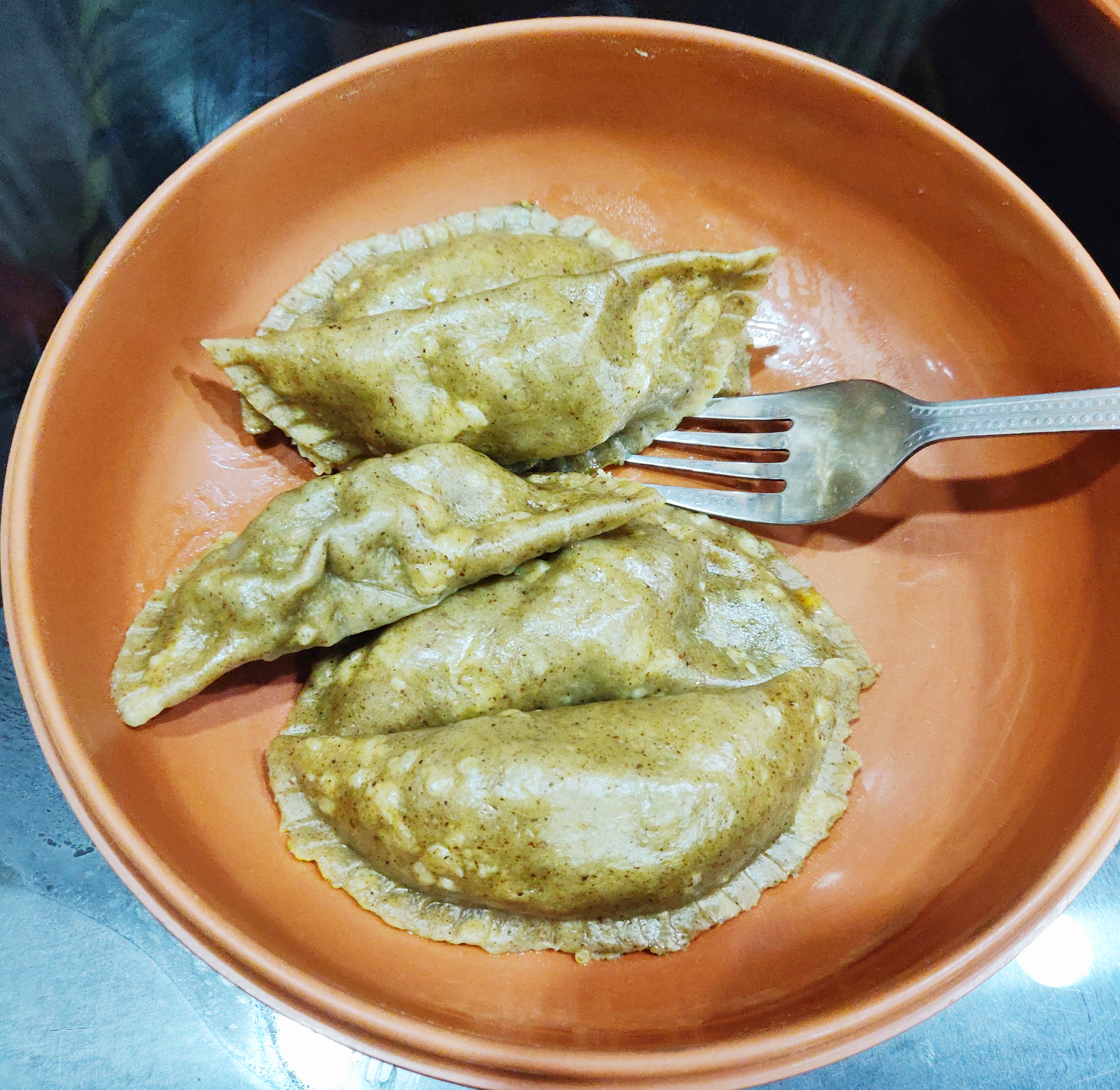
Jaju Soup (Milk and Vegetable Soup)
Traditional Bhutanese soup made up of green leafy veg like local spinach, turnips. Broth is prepared with milk and butter. It is served with all the meals. It’s a good appetizer. It comes as a side dish and hence cannot be ordered individually.
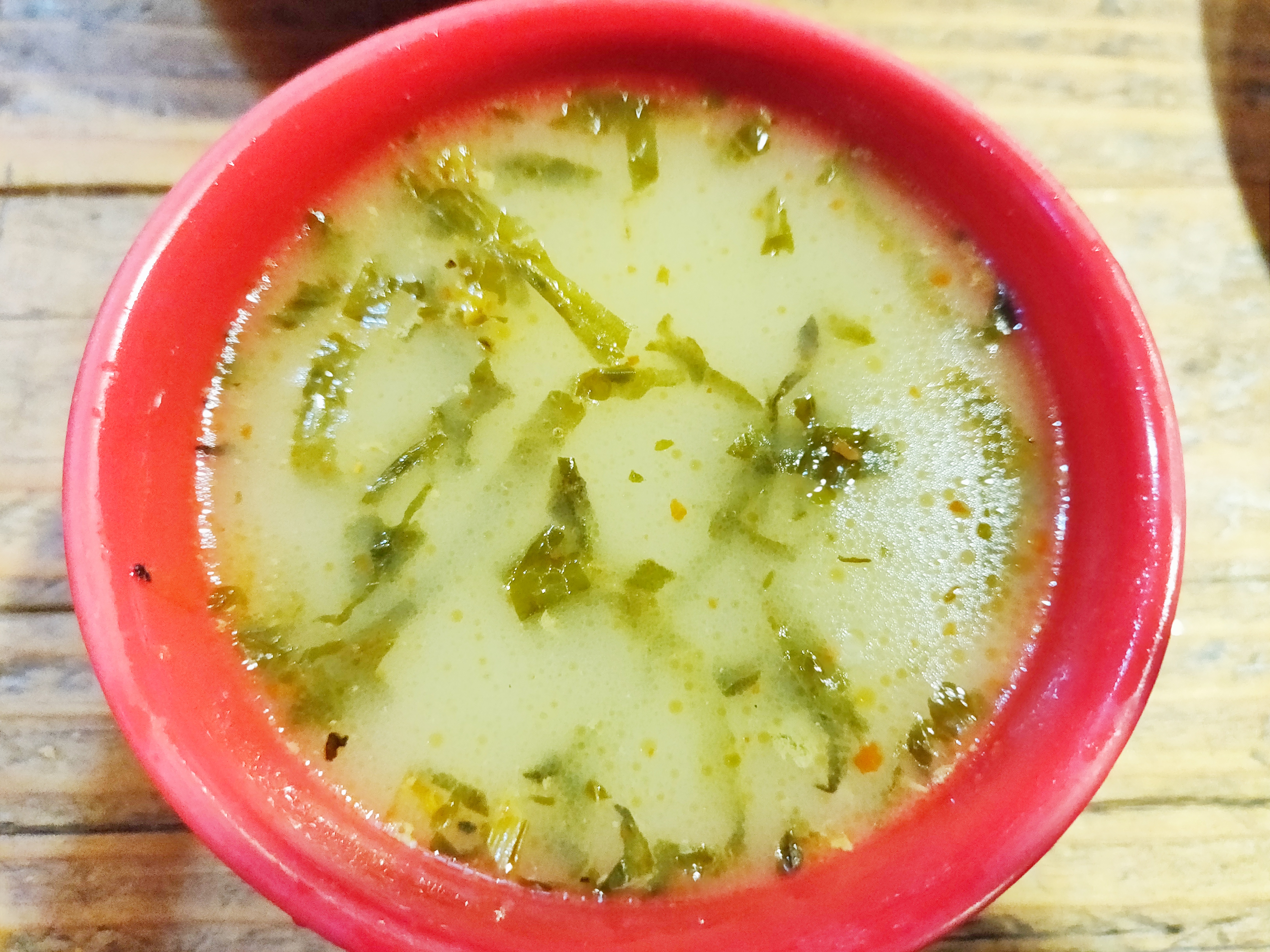
Thuppa ( rice gruel)
Street vendors sell Thuppa – a type of rice porridge made with rice and spices. Vegetarian version has paneer added to it and non-vegetarian version has dried beef in it. After a daylong sightseeing, I was totally exhausted when I reached a foot ball stadium in Thimbu. A match was going on and near the entrance a lady was selling it. I tried it and it was like Ambrosia for my tired body, soothing and comforting. She charged Rs. 40 for a 250 Ml cup.
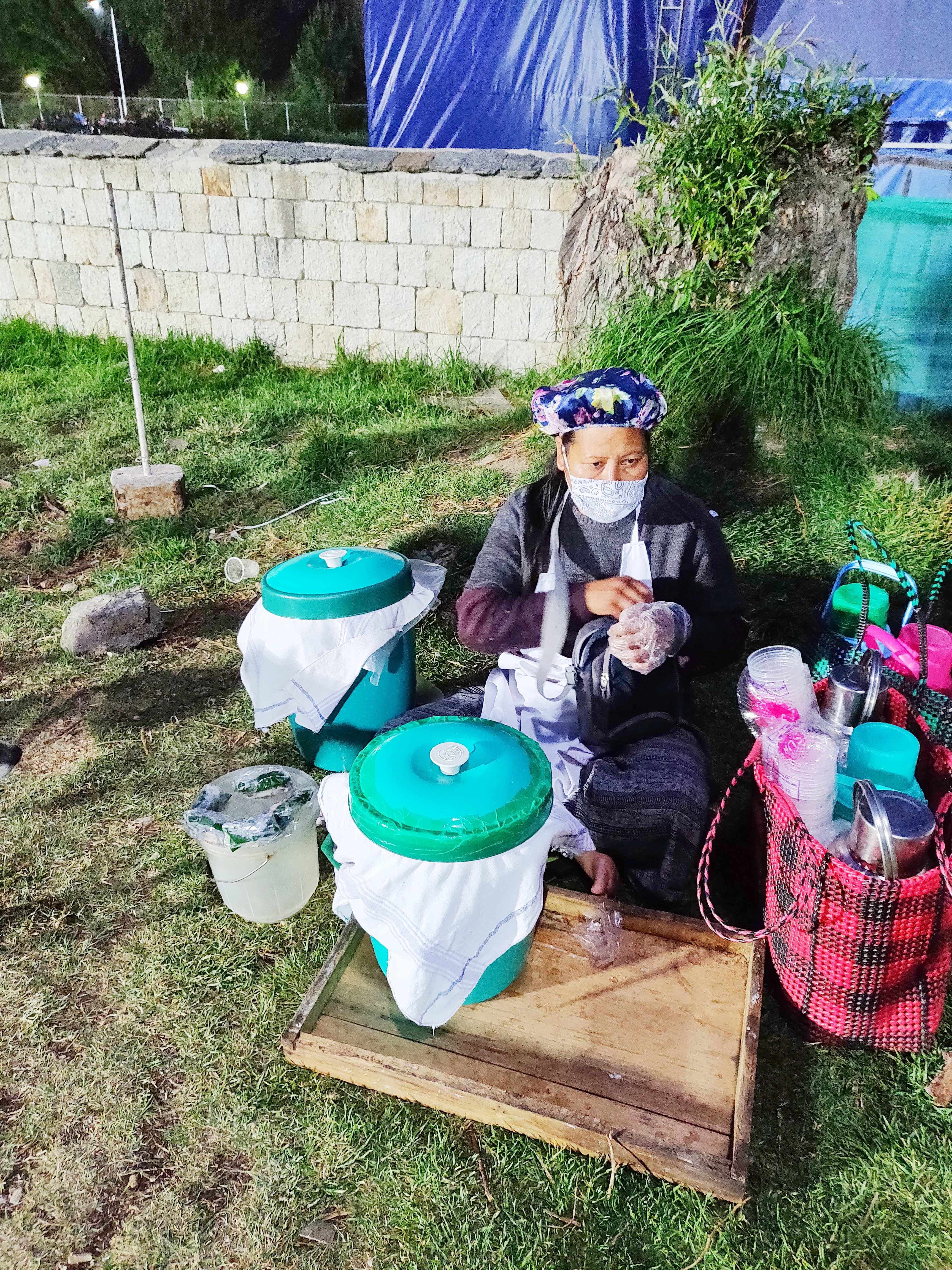

Bathup (Flour Soup)
Flat rice noodle prepared with spices. Both vegetarian and non-vegetarian versions are available. It is mainly served for breakfast at local restaurants. I came across the dish while travelling in a local bus from Thimbu to Punakha and the bus stopped at a local restaurant for a break. The price for a large bowl was Rs. 80. The lady gave me a small quantity in a tiny bowl to be photographed.
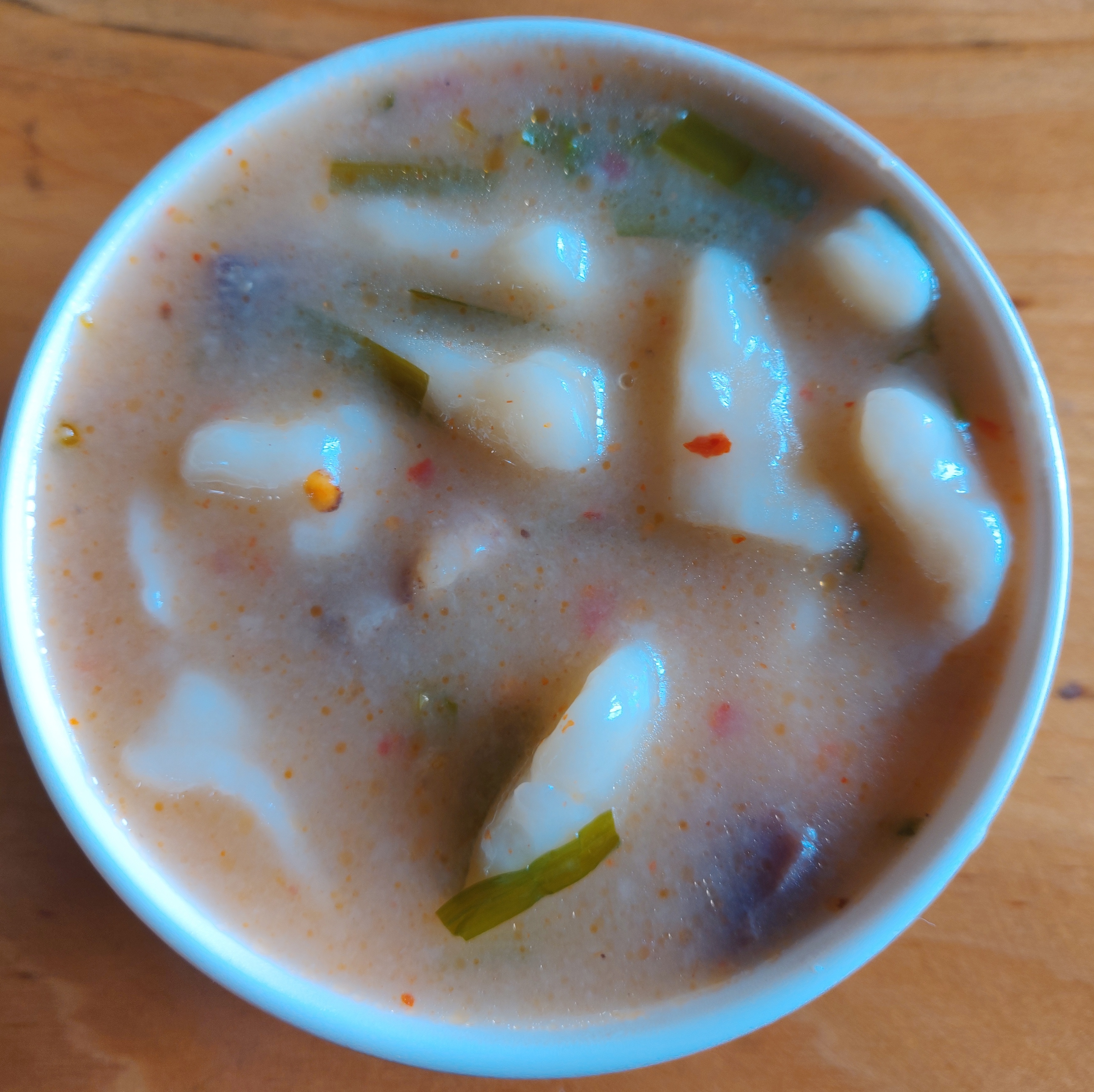
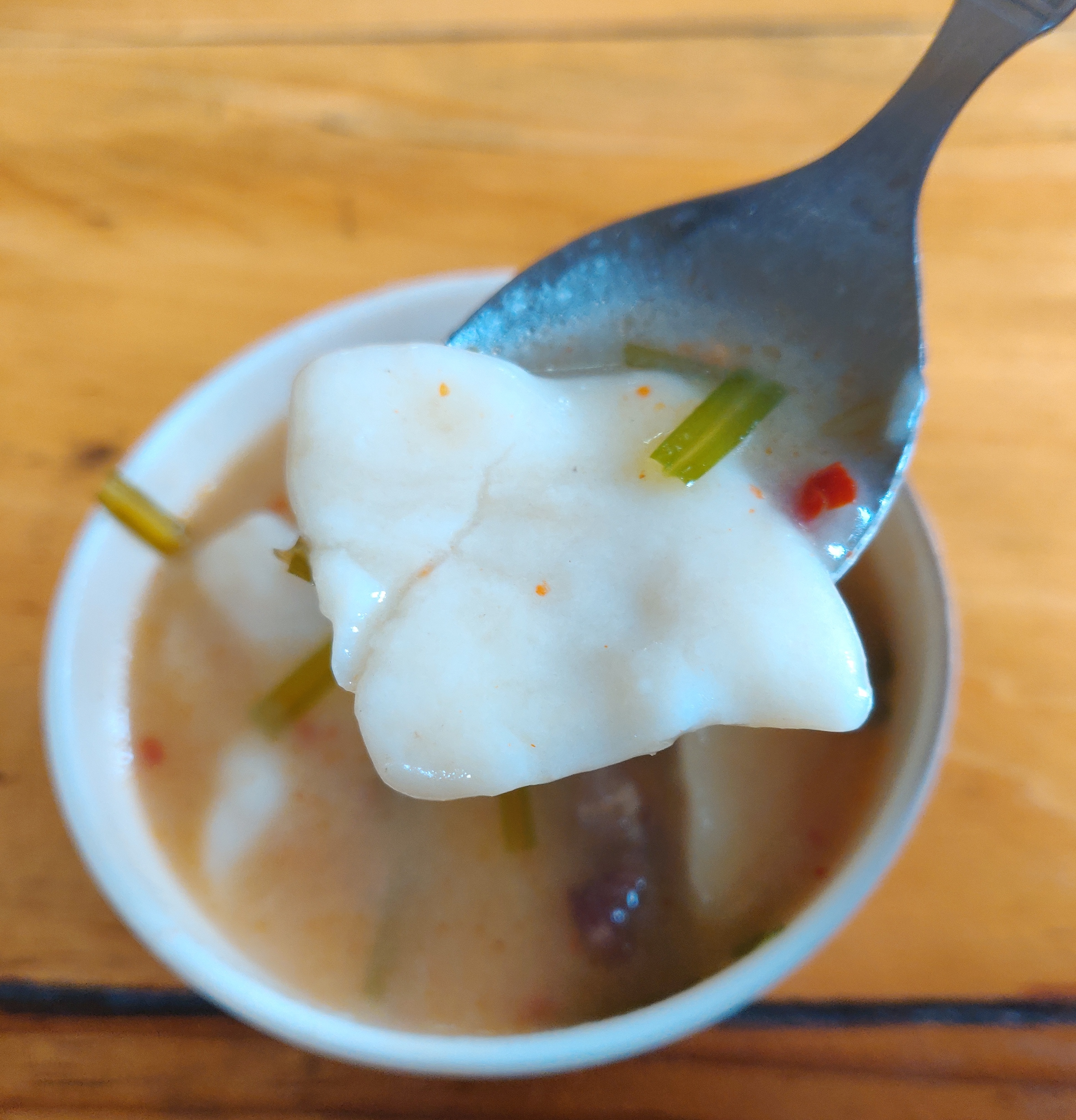
Goenhogay (Cucumber Salad)
Salad made from cucumber, chilli, tomato, onion and cheese. It is not available in any of the restaurants. I specifically requested my friend in Pheunsholing to prepare it. The Sinchuan pepper added to the salad gives it an exotic taste. It’s a very spicy salad
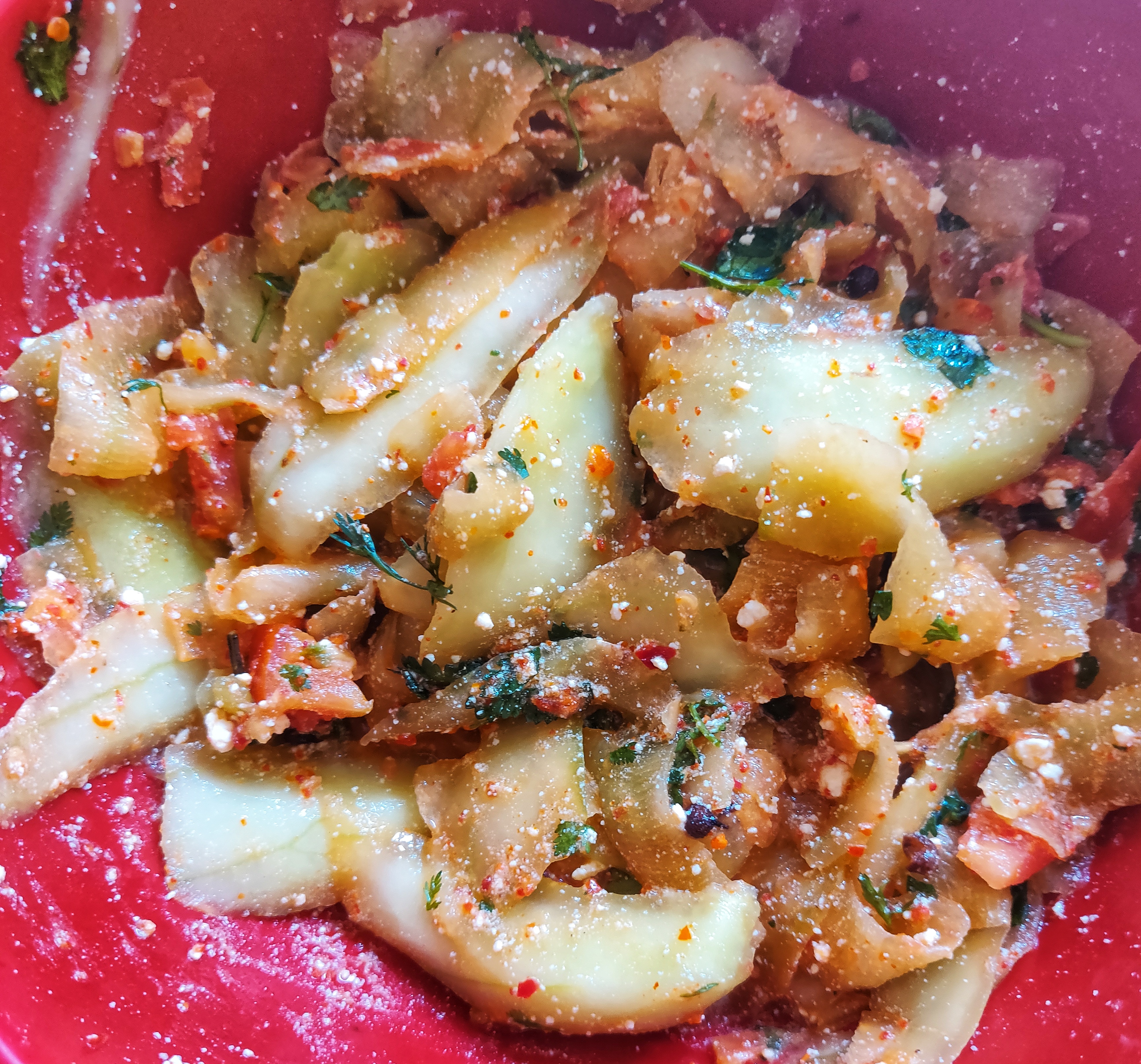
Ezay (Chilly Dip)
It is taken with every dish – rice, momos etc. It is prepared from dried chilly, coriander and red onion. Recipe and texture varies from place to place. It’s like pickle for the Bhutanese.
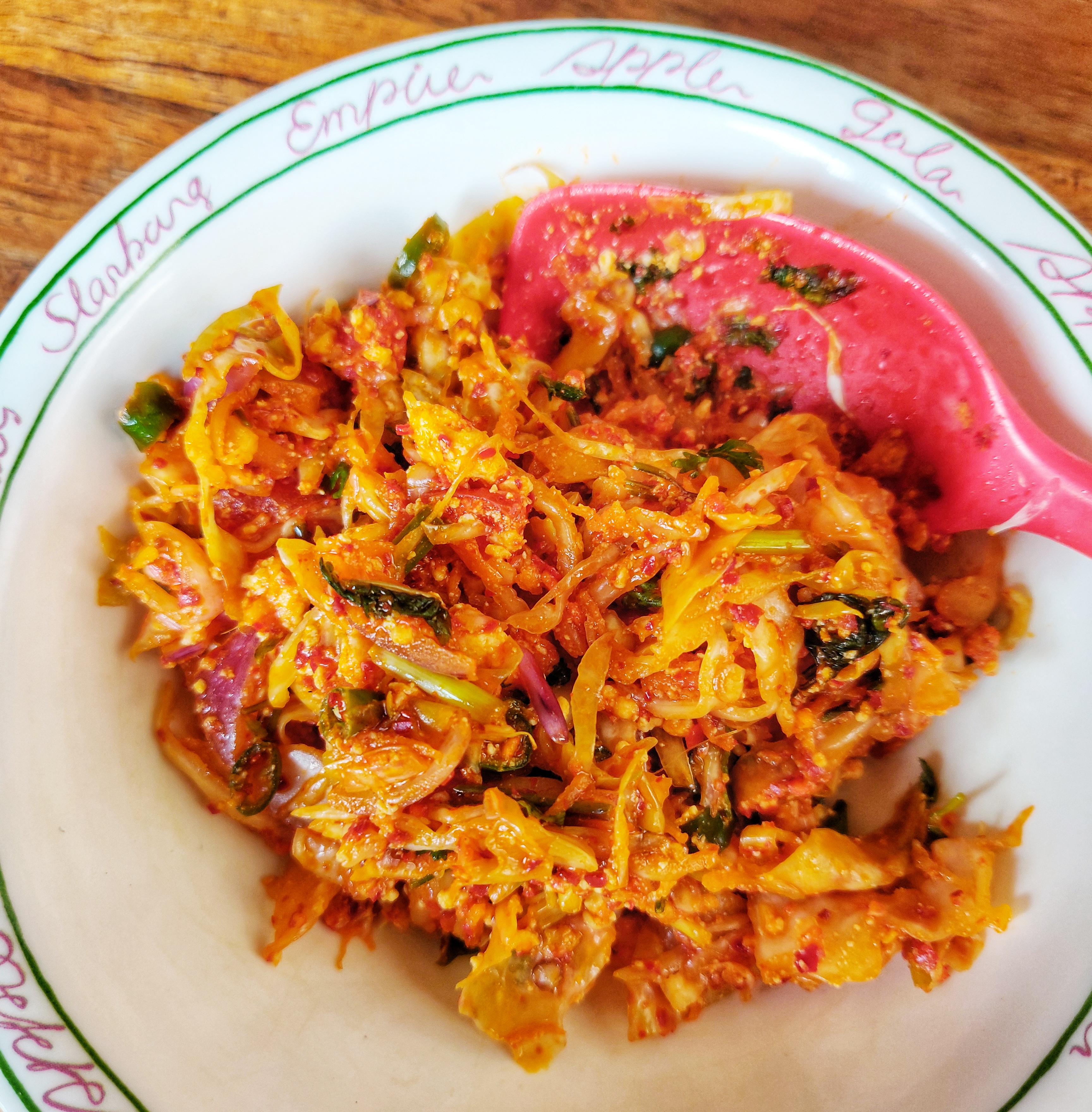
Chago/ Churpi (Dried Yak Cheese)
Dried yak cheese is commonly seen hanging from strings in all local shops. It is rock hard and very difficult to chew. It is generally popped into mouth, and allowed to melt slowly. It was priced at Rs. 10/ piece. I had it from Thimbu bus stand. It was so hard that I couldn’t finish it.
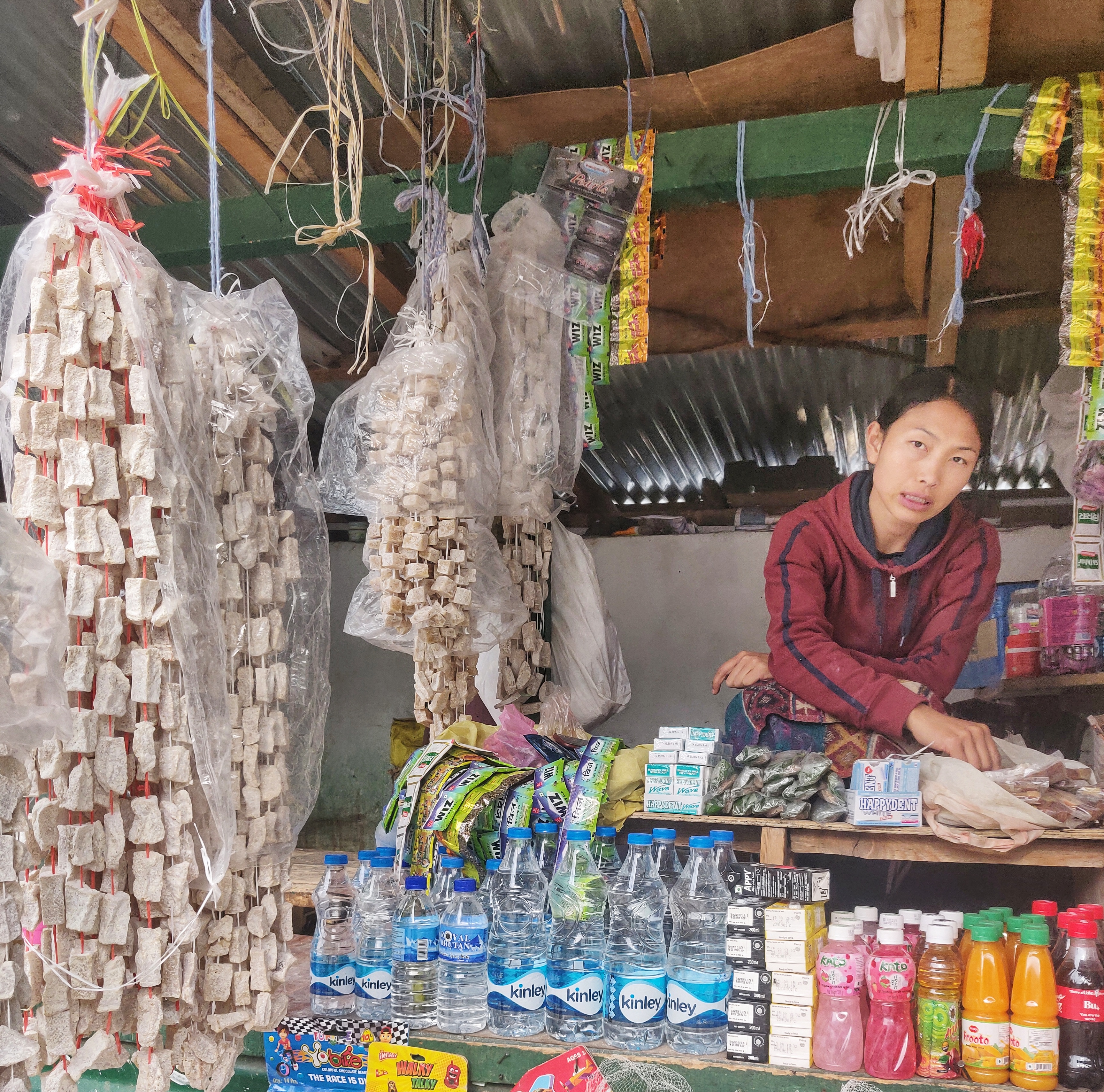
Kamchup – Sweet
It’s sour as well as mild sweet tasting fruit candy. It’s very soft and melts in mouth. It’s a good medicine for mountain sickness. Bhutanese people take it when they trek through the mountains. A packet of Kamchup, which contains 5-6 sweets was priced Rs. 20.
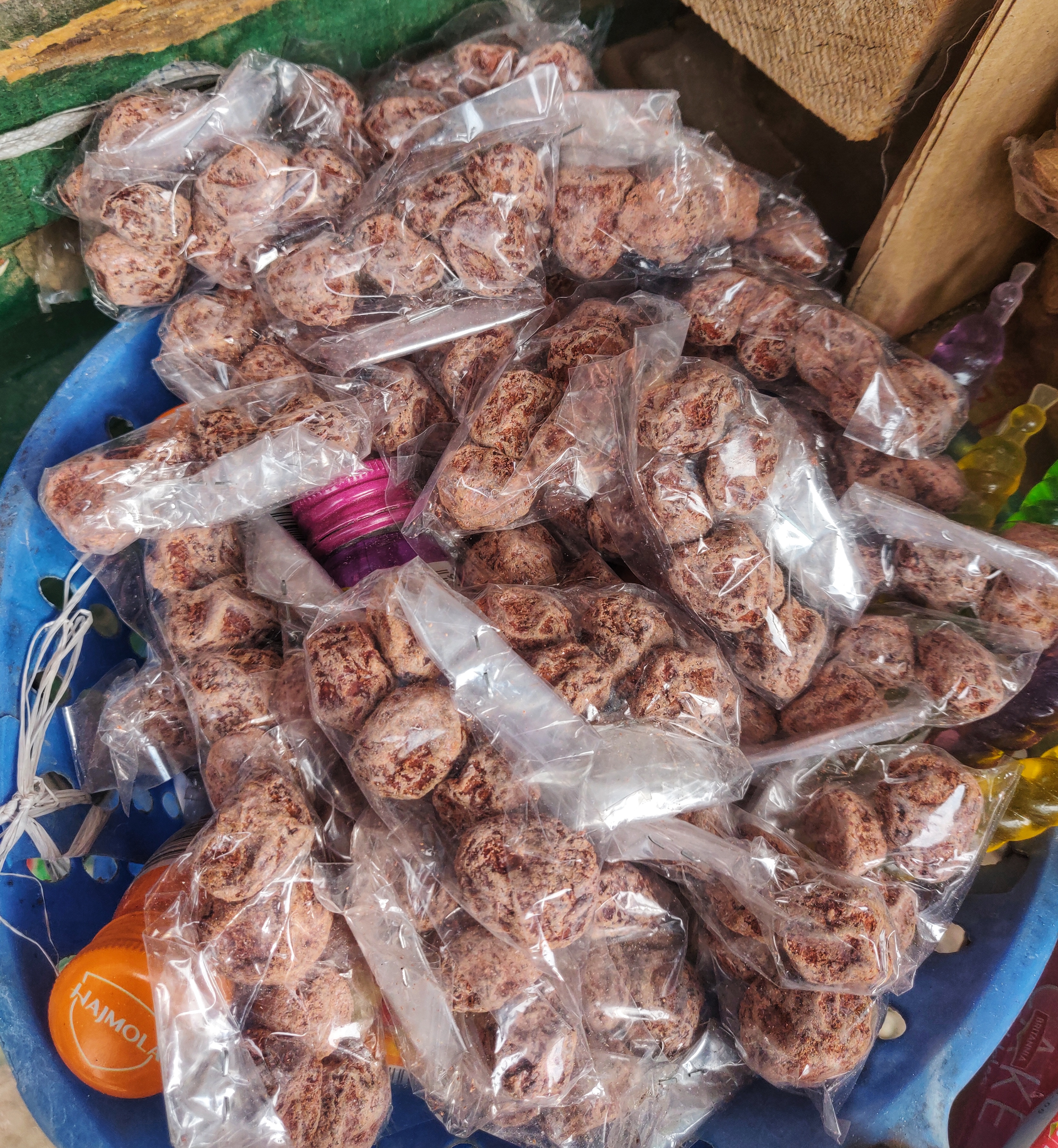
Suja (Butter Tea)
Tea leaves are boiled with water, yak butter and salt. It’s frothy drink that tastes more like a soup. Usually taken with Zaow (rice crispies). I don’t take tea usually, yet Suja was my favourite drink in Bhutan. I consumed gallons of Suja daily. Its available in all restaurants. In restaurants, instead of yak butter they add cow butter. Price is Rs. 30-50/ per cup

Zaow (Rice Crispies or Puffed Rice)
It is offered with tea and suja. In restaurants, a communal basket of zaow is kept at the table. Various varieties are available – Plain rice crispies, fried rice crispies, puffed rice etc
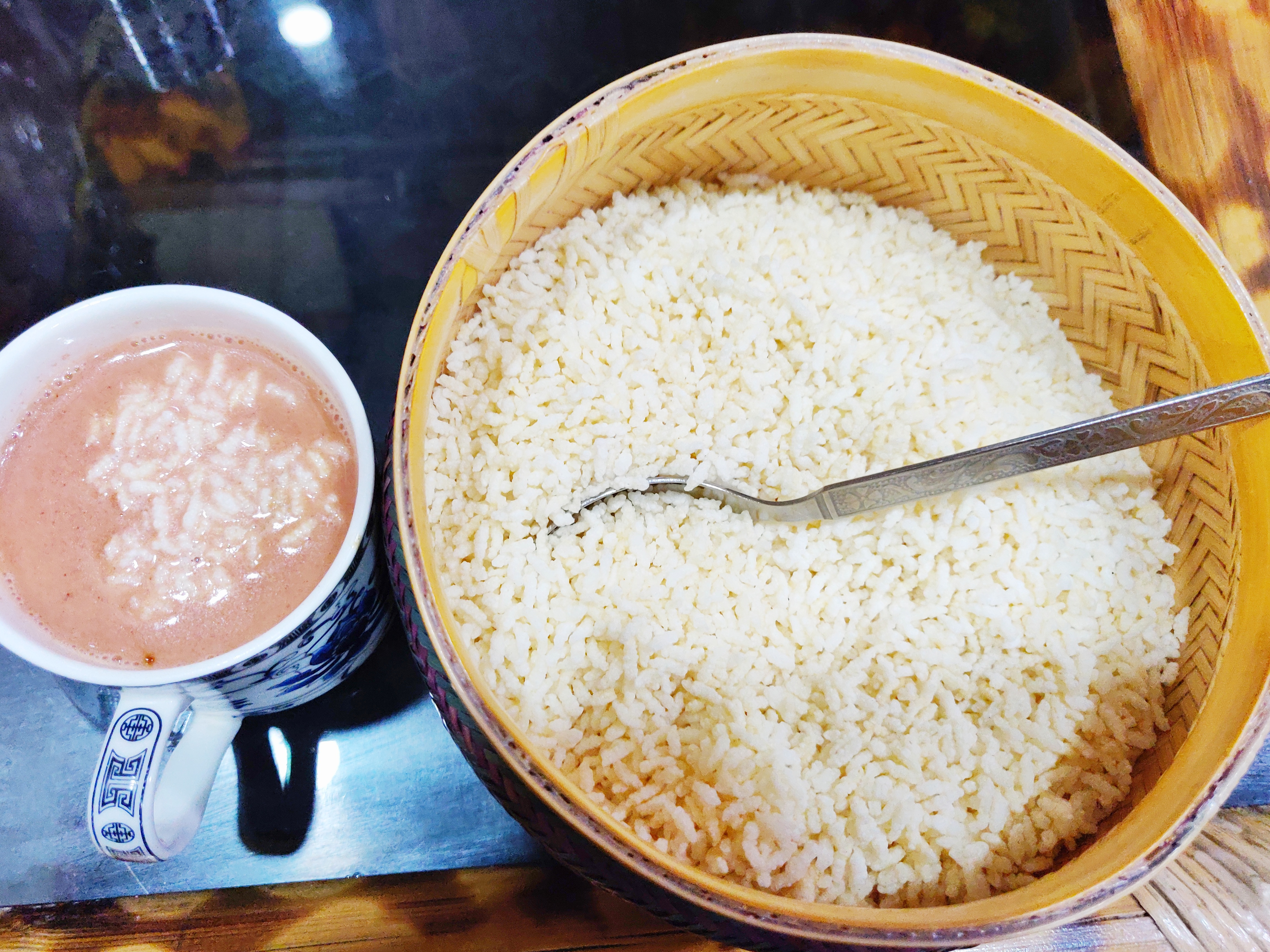
Ara or arag (alcoholic beverage)
Prepared by fermenting or distilling rice/ wheat/maize/millet / barley. It has strong smell and taste. I tasted it at Simply Bhutan Museum, where it was given as a welcome drink.

‘One cannot think well, love well, sleep well, if one has not dined well’ – Virginia Woolf . Well, I think one of the best parts of my Bhutan trip was the variety cuisine I had and now that monsoon has started in my place, I long for my darling Suja !!!

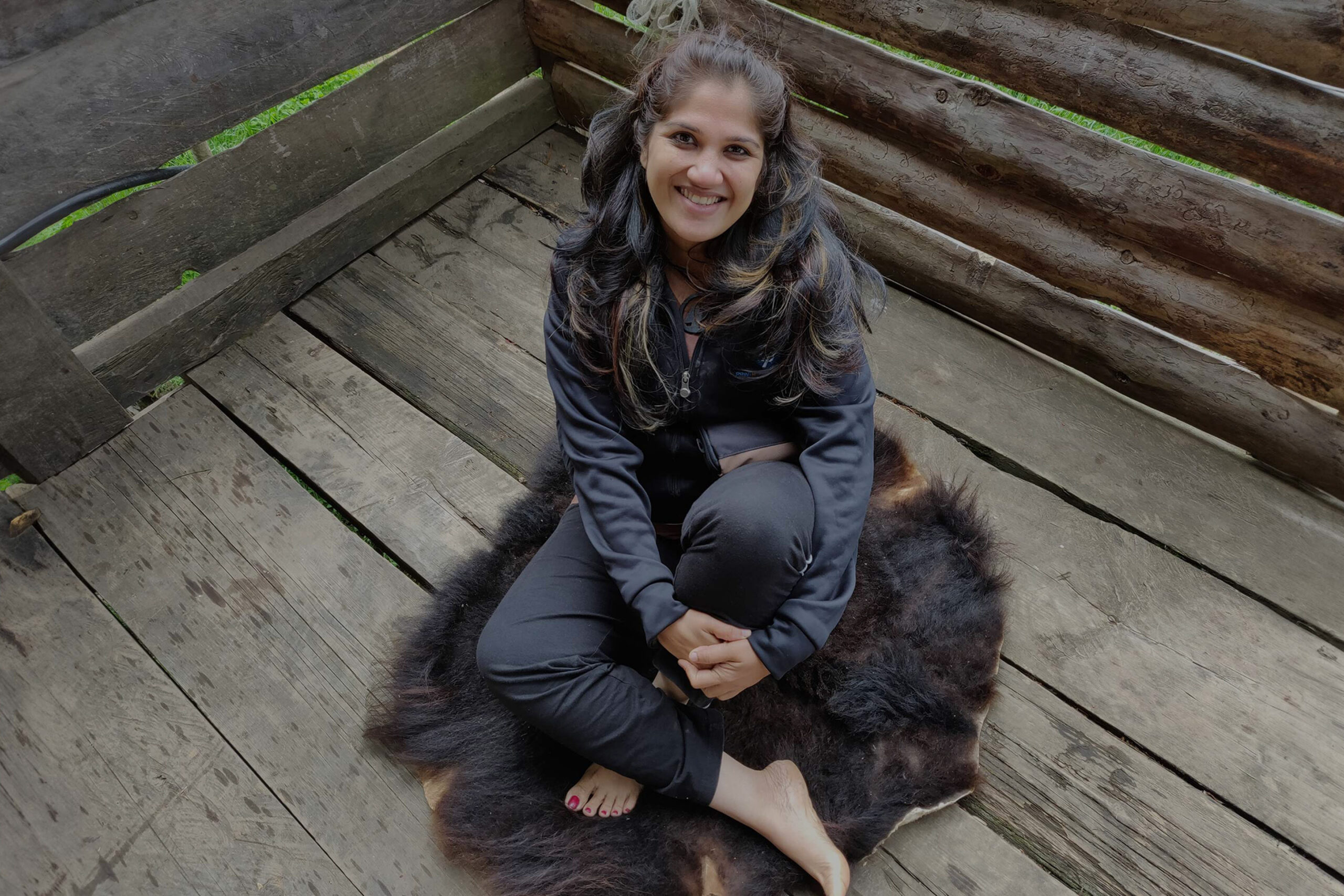
Superb narration
Makes me want to visit Bhutan…..